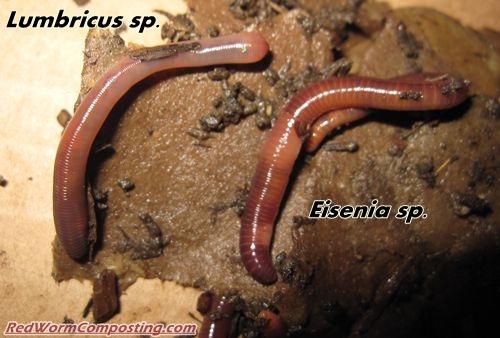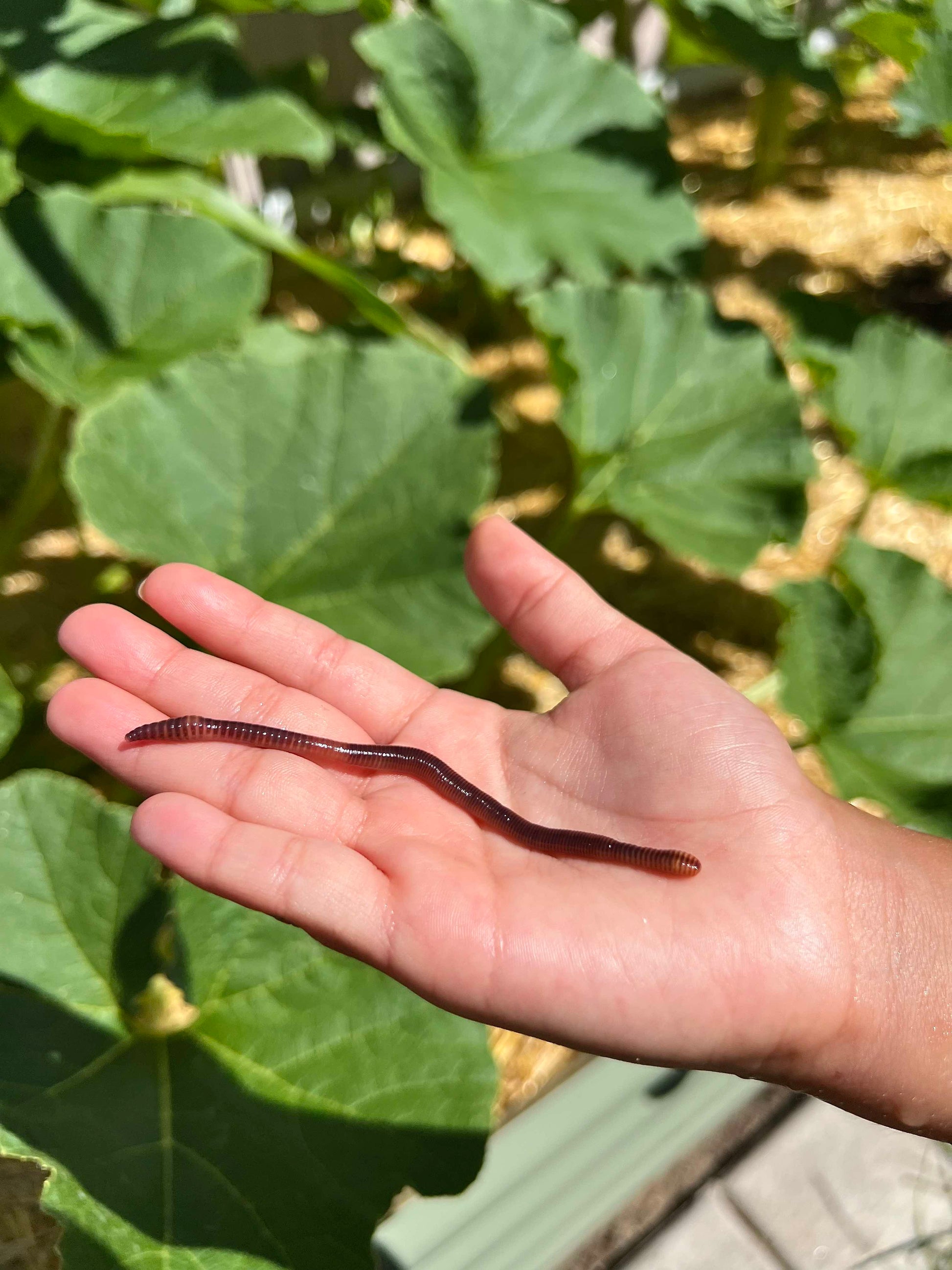Utilizing the Power of Red Wiggler Composting: An In-Depth Check Out the Environmental and Agricultural Perks of This All-natural Waste Reduction Method
The practice of red wiggler composting stands for a compelling crossway of environmental stewardship and farming technology, offering a sustainable service to the expanding obstacles of waste administration and dirt degradation. Via the natural procedure of vermicomposting, organic waste is transformed right into a useful source that not only improves dirt however likewise contributes to a substantial reduction in garbage dump contributions and greenhouse gas exhausts. As we explore the diverse benefits of this method, we discover how it can reshape farming practices and advertise environmental recognition, triggering a better exam of its potential effect on our ecosystems and areas.
What Are Red Wiggler Worms?
Red wiggler worms, clinically understood as Eisenia fetida, are a types of earthworm particularly adapted for composting and natural waste break down. These worms flourish in the nutrient-rich setting of decaying organic issue, making them optimal for vermicomposting systems. Expanding to a length of approximately three to four inches, red wigglers are defined by their reddish-brown pigmentation and unique banding patterns along their bodies.
Unlike various other earthworm varieties, red wigglers choose to inhabit the top layers of soil and organic particles, where oxygen degrees are greater and food sources are plentiful. Their physiological adjustments permit them to process natural materials effectively; they have a strong gastrointestinal system that enables them to transform waste into nutrient-rich spreadings, often described as "black gold" in horticulture and farming contexts.
Eisenia fetida plays an important function in the community by facilitating the disintegration process, enhancing soil structure, and promoting microbial task. Provided their special characteristics and ecological importance, red wiggler worms have ended up being a main component in lasting waste monitoring practices and natural horticulture efforts, adding considerably to environmental health.
Advantages for Soil Health And Wellness
The incorporation of red wiggler worms in composting systems supplies considerable advantages for soil wellness. These worms play a crucial role in the decomposition process, breaking down raw material into nutrient-rich vermicompost. This natural plant food improves dirt water, structure, and oygenation retention, adding to an extra positive setting for plant growth.
Vermicompost is abundant in crucial nutrients such as potassium, nitrogen, and phosphorus, which are vital for plant growth (Red Wiggler Composting). The presence of helpful microorganisms in vermicompost additionally promotes dirt health and wellness by boosting nutrient accessibility and reducing soil-borne microorganisms. This dynamic communication fosters a robust soil ecosystem that supports sustainable farming techniques
In addition, red wigglers facilitate the development of humus, a secure organic issue that boosts soil fertility and durability. This boosted natural material not just enhances soil structure yet also improves its capability to withdraw carbon, reducing climate adjustment effects.
Integrating red wiggler composting into agricultural systems can, for that reason, cause much healthier dirts, greater crop yields, and boosted sustainability. Consequently, welcoming this all-natural waste reduction technique can yield extensive benefits for both the atmosphere and farming efficiency.
Effect On Waste Decrease
Integrating red wiggler worms right into composting systems substantially minimizes waste, changing natural products that would certainly otherwise add to garbage dumps into useful compost. This approach, referred to as vermicomposting, successfully refines kitchen area scraps, lawn waste, and other naturally degradable products, resulting in a significant reduction in the quantity of waste sent out to land fills. According to the Epa, natural waste makes up a significant part of garbage dump components, creating unsafe greenhouse gases as it decays anaerobically.
By making use of red wigglers, a very effective composting representative, services and families can draw away a substantial amount of organic waste from these landfills. Each pound of red wigglers can refine and take in regarding half an extra pound of organic waste daily, leading to an amazing reduction in overall waste generation.
Moreover, the application of vermicomposting supports neighborhood waste monitoring initiatives and advertises a round economic climate, in which waste is changed into a source. As areas increasingly embrace this technique, the cumulative result on waste decrease ends up being apparent, cultivating an extra lasting environment and encouraging responsible waste administration practices. Welcoming red wiggler composting not just alleviates waste issues however additionally boosts neighborhood recognition concerning lasting living.
Enhancing Agricultural Practices
Making use of red wiggler worms in farming methods can considerably boost soil health and wellness and crop productivity. These worms play an essential role in the composting procedure, damaging down raw material right into nutrient-rich vermicompost. This all-natural plant food boosts soil aeration, framework, and water retention, which are necessary for durable plant development.
In addition, the spreadings created by red wigglers are abundant in important nutrients, such as nitrogen, phosphorus, and potassium, promoting much healthier crops with greater returns. The microbial task boosted by these worms also contributes to a thriving soil ecological community, increasing biodiversity and durability against parasites and diseases.

Furthermore, the usage of vermicompost can enhance web link dirt pH degrees, making nutrients much more accessible to plants. Red Wiggler Composting. As a result, farmers can grow healthier crops while simultaneously adding to soil preservation efforts, inevitably creating a more sustainable farming future
Getting Began With Composting
Beginning your composting journey needs an understanding of the important elements and processes involved. The key ingredient in red wiggler composting is organic waste, which can consist of cooking area scraps, backyard waste, and paper products. It is crucial to maintain a balance in between eco-friendly materials, abundant in nitrogen, and brownish products, high in carbon. This balance fosters an ideal environment for red wigglers, which are the key organisms in this composting technique.
Selecting an appropriate composting system is just as important. Worm Read Full Article bins can be created for interior or exterior use, and they ought to provide adequate drain and oygenation. It is recommended to begin with a tiny number of worms-- about one pound of red wigglers for every single one extra pound of waste created regular.

Final Thought

The technique of red wiggler composting stands for a compelling intersection of ecological stewardship and farming innovation, supplying a lasting option to the growing difficulties of waste management and soil deterioration.Moreover, the application of vermicomposting assistances regional waste management initiatives and promotes a circular economic situation, in which waste is transformed right into a source. As areas progressively embrace this method, the cumulative effect on waste decrease ends up being noticeable, cultivating a much more sustainable environment and encouraging accountable waste management methods. The key active ingredient in red wiggler composting is organic waste, which can consist of cooking area scraps, backyard waste, and paper items.In recap, red wiggler composting offers a sustainable option for natural waste management, yielding nutrient-rich vermicompost that substantially enhances soil health.